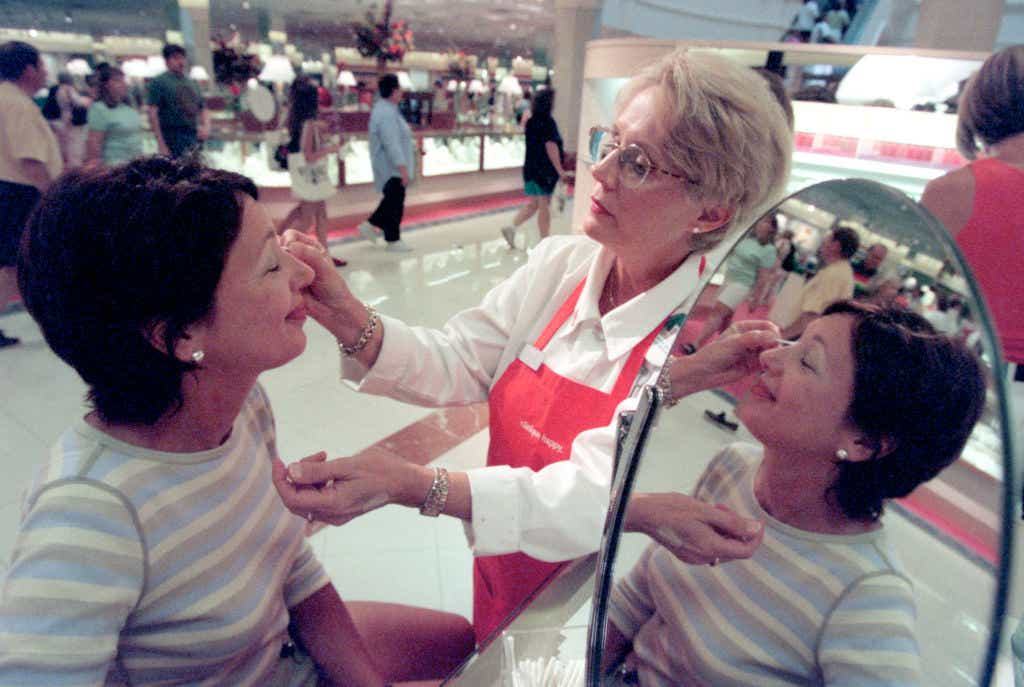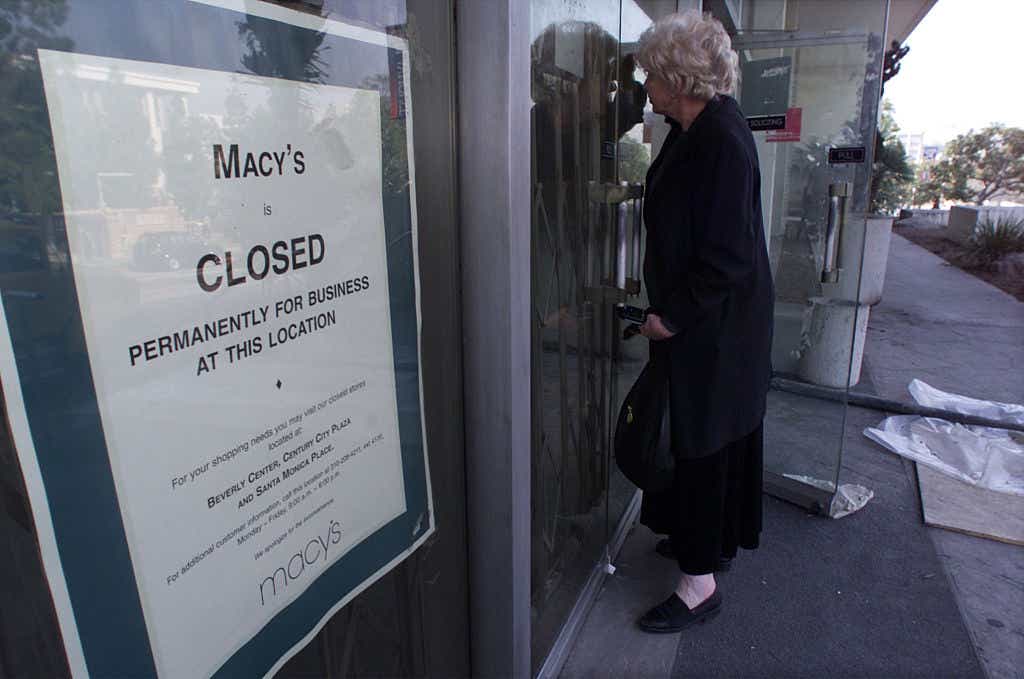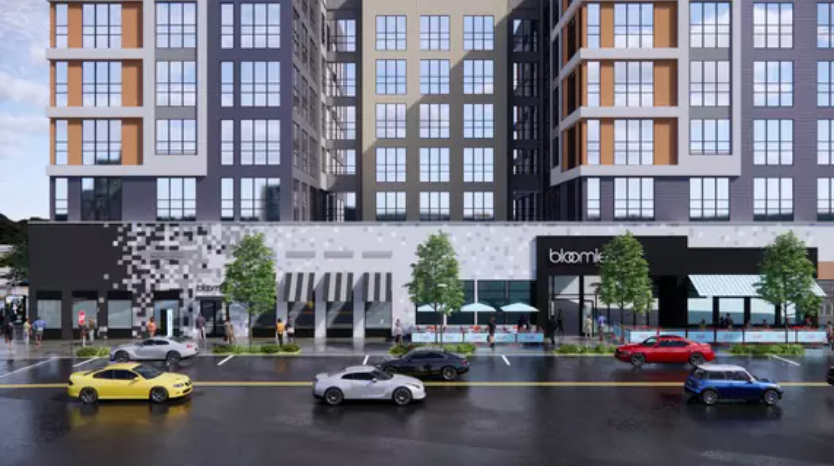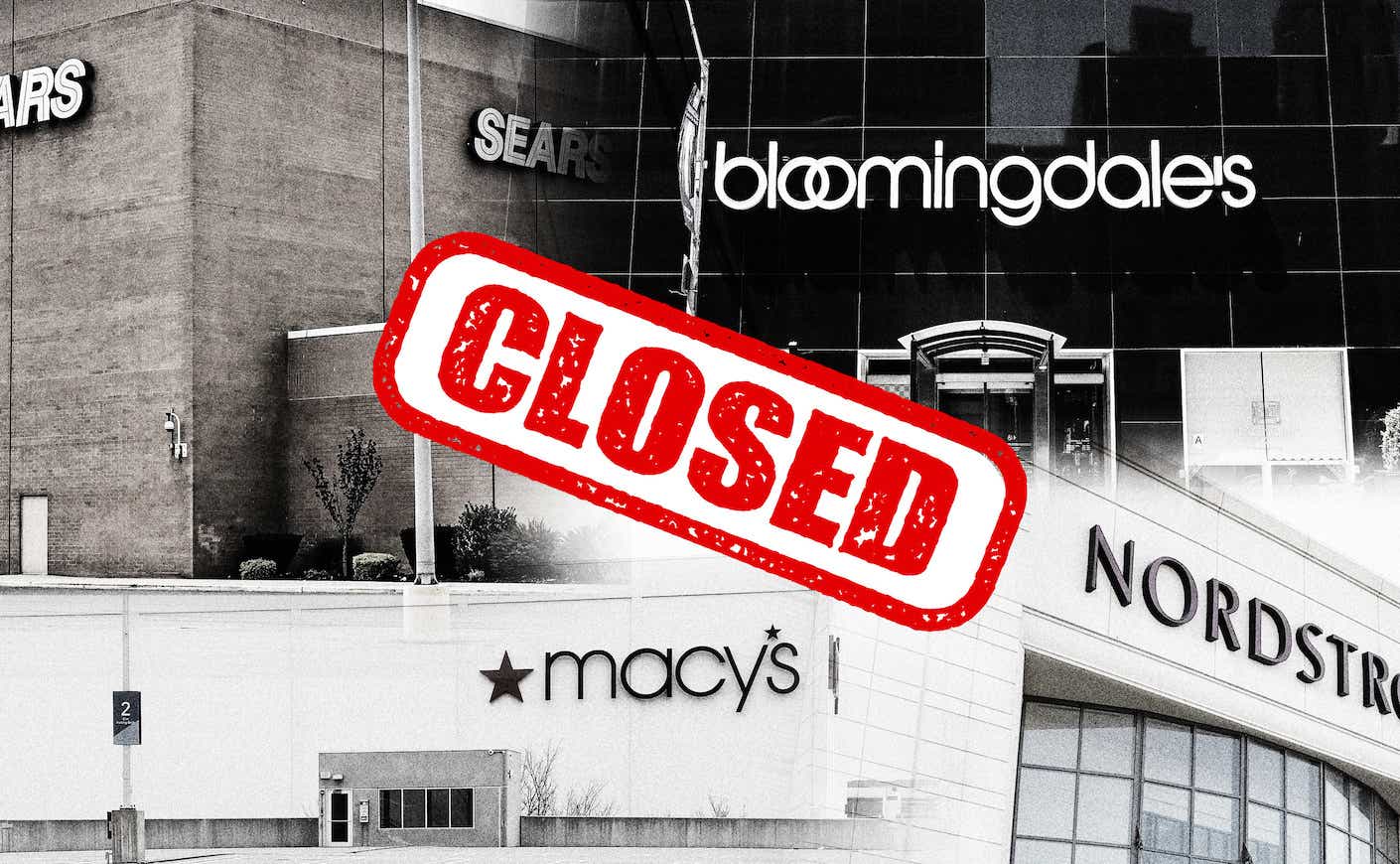When malls first cropped up in the years after World War II, they were essential not only as centers of commerce but as a place for Americans to gather. These sprawling, air-conditioned spaces grew, multiplied, and began to assume a culture of their own — they became like watering holes for the American teenager, heavy with the fragrance of Wetzel’s Pretzels or Orange Julius. They were integrated into family traditions — a place parents dragged their children to each year for school portraits, new shoes, or to meet Santa and the Easter Bunny. And an essential component of these malls has always been the department stores that have anchored them.
But over the past two decades, these big-box stores have disappeared. In the approximately 1,000 malls that remain, there are about 750 anchor vacancies that once housed chains like Macy’s, Nordstrom, and JCPenney. The department stores that remain are now fighting to reinvent themselves.
Earlier this month, Macy’s announced it was accelerating plans to open smaller shops away from suburban malls. These locations, billed as the Market by Macy’s, are about one-fifth the size of the brand’s typical behemoths, offering a “curated assortment of products” and, crucially, a place for customers to pick up and return items they’ve purchased online. Nordstrom and Bloomingdale’s are trying their own smaller shops, too.
But what does that mean for our last remaining department stores? Will the teens of the future ever enjoy the odd pleasure of roaming through a beauty section, receiving an impromptu makeover at one counter while being accosted by spritzes of Shalimar and CK One at another? Will they, too, spend hours sifting through rack after rack of gowns before prom, lulled by the Muzak streaming overhead, while their parents discuss mattresses a floor below? Are these grand chains a thing of the past — to be replaced by their more compact, “curated” cousins?

The fate of the anchor store
“Almost every established retailer in America that’s been around a while would say, ‘Every store I have is too damn big,’” says Jan Kniffen, a leading retail analyst and former exec at May Department Stores (which was acquired by Macy’s parent company in 2005). The obvious reason? So many of their sales are now made online.
Last year, internet purchases accounted for 35 percent of Macy’s business. That’s down from 44 percent in 2020 at the height of the pandemic, but way up from the 25 percent the brand saw in 2019. The same pattern holds true for Nordstrom, which now generates nearly 40 percent of its business online. The pandemic certainly hastened the move away from brick-and-mortar business, Kniffen says, but that shift was already well in motion before the spring of 2020.
Still, that doesn’t mean that chains like Macy’s want to scrap their physical stores for good. One curious thing they’ve observed is that when they close up all their shops in a city or town, online sales there dry up, too, Kniffen says. On average, Macy’s shoppers spend three times more money in areas where the brand also has at least one store, Marc Mastronardi, the chain’s chief stores officer, told CNBC.
“You might not want 20 stores in the market anymore — you might only want 10. Or instead of the 200,000 square-foot-store, you’d want an 80,000 square-foot store,” he says, but you don’t want to completely depart the market. Consumers want a location that can handle returns or provide curbside pickup. And having a store also reminds the community of the brand, Kniffen says, a phenomenon he calls the “billboard effect.”
The challenge is “striking the right balance between physical and online presence,” says Mark A. Cohen, the director of retail studies at Columbia Business School and a former exec at Federated (now Macy’s Inc.). “That’s the holy grail.”

Retail thinks small(er)
The big-box stores that have weathered the retail apocalypse (so far) are now all thinking smaller. With “the Market,” Macy’s is attempting to essentially offer the same breadth of brands and products that they would in one of their signature stores, but with way fewer items on the floor. “They might show you 22 colors of towels, but only have five colors to sell you in that store and can hopefully ship you the others,” Kniffen says.
So far, Macy’s has five of these scaled-down stores — three in the Dallas-Fort Worth area and two in metro Atlanta — with plans to open three more by the end of the year.
Nordstrom is taking a different approach — focusing far less on inventory and more on customer service, with off-mall hubs that sell next to nothing, but offer gift wrapping, alterations, style advice, and of course, online pickup and returns. They’re already thinking even smaller, too, with “Nordstrom Local” shops that are 1,000 to just 500 square feet — about one-hundredth the size of their traditional store. So far, they only have a handful concentrated in New York City and Los Angeles, but the company seems to be embracing the format.
“We’ve come to realize that customers who interact or engage in Nordstrom Local are spending two and a half times more with us as a direct result of that engagement,” a customer experience exec told the trade publication Retail Dive.
In a nod to its loyal clientele, Bloomingdale’s named its new, smaller offshoot Bloomie’s. Owned by Macy’s, the store describes itself as an “ever-evolving store concept” that offers coffee and cocktails, stylists, and alterations. So far, there’s just one — a 22,000 square-foot-space that opened last year in Fairfax, Virginia. It still carries higher-end luxury merchandise but edited down to offer styles and brands (Chloé, Rag & Bone, Sandro) that appeal to a younger clientele. (Kniffen’s a fan of the concept and we wouldn’t mind seeing more of these crop up, too.)
The jury’s still out on how well these units will fare, and if we can expect more of them in the future. Cohen isn’t optimistic about the Macy’s experiment, at least. The concept’s a little like the mini marts Walmart toyed with in the mid-2010s. Back then, Walmart opened dozens of these locations, which were meant to compete with dollar stores or other small discount shops, then shuttered about 100 of them by 2016.
“If you typically operate in a multi-thousand square foot space and you open up a smaller store, the customer is going to be disappointed often because you can’t carry everything that they expect to find,” Cohen says.
The same thing could play out for Macy’s “Market.” But the bottom line is that these legacy brands are all aiming to shrink their footprints.

Anchors away?
Macy’s is by far the largest department store still hunkered down in malls, with a little over 500 locations across the country. Dillard’s has over 200, based mostly in the South, and does relatively little of its business online. That chain has little interest in testing scaled-down versions, Kniffen says, while Nordstrom has more than 100 of them.
The pandemic delivered a death blow to many legacy brands that had been in decline for years. After years of sluggish sales, JCPenney, Neiman Marcus, and Lord & Taylor all crumbled into bankruptcy.
The survivors now need to take a good, hard look at their remaining stores and do some math. There’s no argument that malls are dying all over the U.S. The ease of the online shopping experience has proven irresistible, fueling a rise in brick-and-mortar closures and an exodus from malls. (According to the real estate firm, CoStar Group, a record 12,200 stores shuttered in 2020.) There’s also little doubt that many more of the country’s 1,000 or so malls will perish in the years to come.
But many experts believe that a fraction of those still standing will continue on — reinventing themselves more as sites where people can see a movie, go to a restaurant, or go bowling, and hopefully buy something on the way out. “People love to be in public with other people,” Alexandra Lange writes in her new book Meet Me by the Fountain: An Inside History of the Mall. It’s an aspect of human nature that malls in the U.S. have fulfilled since World War II, she argues.
Kniffen puts the number of survivors at 350 so-called “super-regional malls” — sites with several anchors, measuring at least 800,000 square feet (Cohen places that number closer to 200). That means Macy’s will likely need to shed dozens, if not hundreds, of its anchor stores. And the chain’s already in the process of doing just that. The company announced in February 2020, right at the cusp of the pandemic, that it would close at least 125 of its least-productive locations over the next three years.
In order to make the most of their space, Kniffen says big-box stores are leasing out square footage to Sunglass Huts, Starbucks, and restaurants that they had removed long ago. Stores will also need to up their game, Cohen says, by creating spaces that are both aesthetically pleasing and deliver an exceptional customer experience — with a seamless pick-and-return process.
But, just like with shopping, finding the “right size” for franchises that have for most of their histories have been thinking big will be a process, Kniffen says. So expect more change and experimentation to come.









